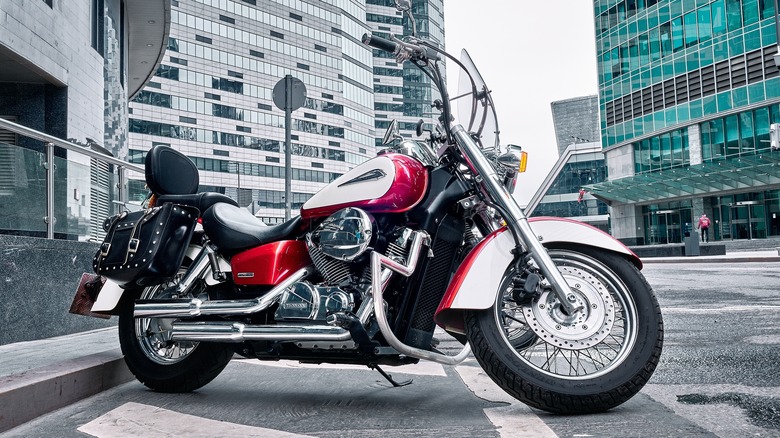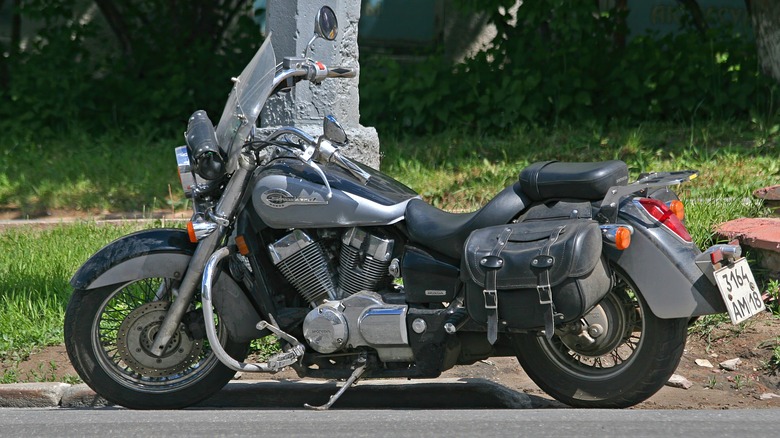
Aleksei Golovanov/Shutterstock
Harley-Davidson might represent the benchmark of cruising motorcycles today, but in the early-1980s, the company was in real financial trouble. Compared to its foreign competitors, Harley-Davidson’s bikes were considered expensive and inferior in both performance and reliability. In fact, the Japanese manufacturers were doing so well with their Universal Japanese Motorcycles in the United States that they decided to start building cruisers to appeal to an even greater segment of the American population.
Although Honda wasn’t the first OEM to bring an import cruiser to market, its Shadow would ultimately emerge as one of the most enduring cruiser-style bikes, besides those from Harley-Davidson itself. Honda’s first Shadows, the VT500 and larger VT750, were launched in 1983. Although they were certainly considered impressive bikes with typical Honda quality and better technology than their American counterparts, they failed to completely win over the cruiser crowd for several reasons.
To begin, their V-twin engines had a wider 52-degree separation angle between the cylinders, as opposed to classic American V-twins which had a 45-degree separation angle. The chrome exhaust pipes exited on both sides of the bike, instead of just one side. Also, the Shadows used a shaft to drive their rear wheels instead of an old-school chain. Lastly, the Honda’s engines were water-cooled instead of air-cooled, which introduced a prominent radiator and associated hoses to the front of the bikes.
Honda was sued by Harley-Davidson

Miraleks/Shutterstock
Over the next decade, Honda would address most of the criticisms lobbed at the early Shadows by cruiser fans, gradually bringing its styling closer and closer to Harley-Davidson’s motorcycles, not to mention engine size, which would balloon up to 1100 cubic centimeters. This trend of aping Harley would culminate in 1995 with the Shadow ACE (American Classic Edition), the most Harley-like Honda yet. It was even made in America rather than Japan.
But possibly the biggest departure from the previous Shadows is that ACE’s engine used a single-pin crankshaft design compared to Honda’s traditional dual-pin crankshaft. This actually resulted in a loss of 10 horsepower, so why would Honda do it? The sound. That distinctive loping sound of a V-twin engine with a single-pin crank. In other words, just like a Harley.
Harley wasted no time in suing Honda over the Shadow ACE, alleging that the distinctive engine sound was a company trademark. We’ll never know who might’ve won because Harley-Davidson quietly dropped the lawsuit in the late-1990s. Around that same time, Honda stopped making the ACE anyway, choosing to concentrate on its Aero and Sabre version of the Shadow.
In 2023, a full 40 years after it debuted, you can still buy a brand new 750cc Honda Shadow motorcycle which speaks to how firmly this bike has cemented itself in American motorcycle culture, even if certain moments in its history weren’t that proud.
Note: This article have been indexed to our site. We do not claim legitimacy, ownership or copyright of any of the content above. To see the article at original source Click Here













